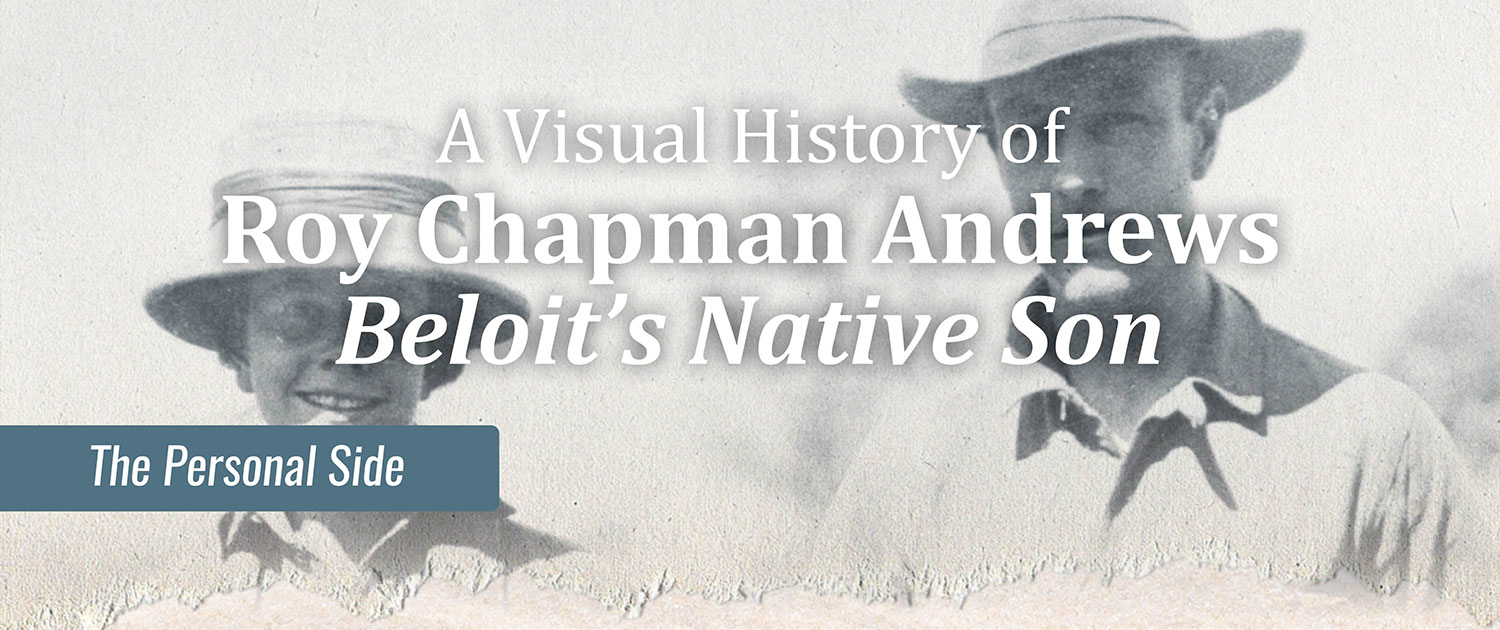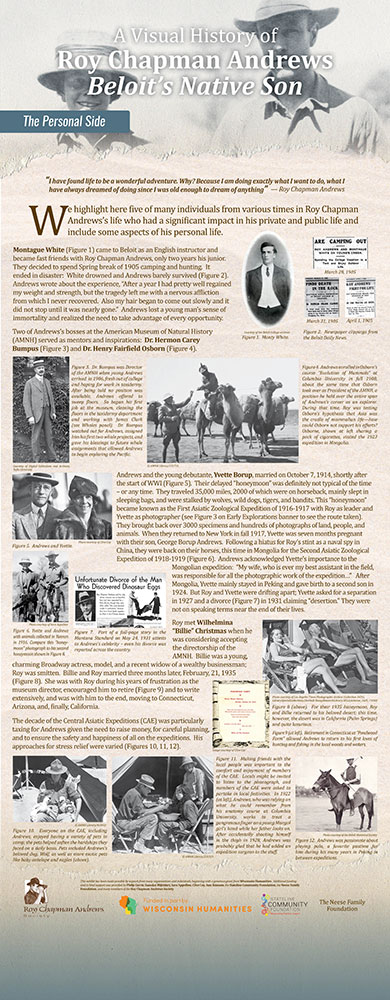The Personal Side
“I have found life to be a wonderful adventure. Why? Because I am doing exactly what I want to do, what I have always dreamed of doing since I was old enough to dream of anything”
~Roy Chapman Andrews
We highlight here five of many individuals from various times in Roy Chapman Andrews’s life who had a significant impact in his private and public life and include some aspects of his personal life.
Montague White (Figure 1) came to Beloit as an English instructor and became fast friends with Roy Chapman Andrews, only two years his junior. They decided to spend Spring break of 1905 camping and hunting. It ended in disaster: White drowned and Andrews barely survived (Figure 2). Andrews wrote about the experience, “After a year I had pretty well regained my weight and strength, but the tragedy left me with a nervous affliction from which I never recovered. Also my hair began to come out slowly and it did not stop until it was nearly gone.” Andrews lost a young man’s sense of immortality and realized the need to take advantage of every opportunity.
Two of Andrews’s bosses at the American Museum of Natural History (AMNH) served as mentors and inspirations: Dr. Hermon Carey Bumpus (Figure 3) and Dr. Henry Fairfield Osborn (Figure 4).
Andrews and the young debutante, Yvette Borup, married on October 7, 1914, shortly after the start of WWI (Figure 5). Their delayed “honeymoon” was definitely not typical of the time – or any time. They traveled 35,000 miles, 2000 of which were on horseback, mainly slept in sleeping bags, and were stalked by wolves, wild dogs, tigers, and bandits. This “honeymoon” became known as the First Asiatic Zoological Expedition of 1916-1917 with Roy as leader and Yvette as photographer (see Figure 3 on Early Explorations banner to see the route taken). They brought back over 3000 specimens and hundreds of photographs of land, people, and animals. When they returned to New York in fall 1917, Yvette was seven months pregnant with their son, George Borup Andrews. Following a hiatus for Roy’s stint as a naval spy in China, they were back on their horses, this time in Mongolia for the Second Asiatic Zoological Expedition of 1918-1919 (Figure 6). Andrews acknowledged Yvette’s importance to the Mongolian expedition: “My wife, who is ever my best assistant in the field, was responsible for all the photographic work of the expedition…” After Mongolia, Yvette mainly stayed in Peking and gave birth to a second son in 1924. But Roy and Yvette were drifting apart; Yvette asked for a separation in 1927 and a divorce (Figure 7) in 1931 claiming “desertion.” They were not on speaking terms near the end of their lives.
Roy met Wilhelmina “Billie” Christmas when he was considering accepting the directorship of the AMNH. Billie was a young, charming Broadway actress, model, and a recent widow of a wealthy businessman; Roy was smitten. Billie and Roy married three months later, February, 21, 1935 (Figure 8). She was with Roy during his years of frustration as the museum director, encouraged him to retire (Figure 9) and to write extensively, and was with him to the end, moving to Connecticut, Arizona, and, finally, California.
The decade of the Central Asiatic Expeditions (CAE) was particularly taxing for Andrews given the need to raise money, for careful planning, and to ensure the safety and happiness of all on the expeditions. His approaches for stress relief were varied (Figures 10, 11, 12).


